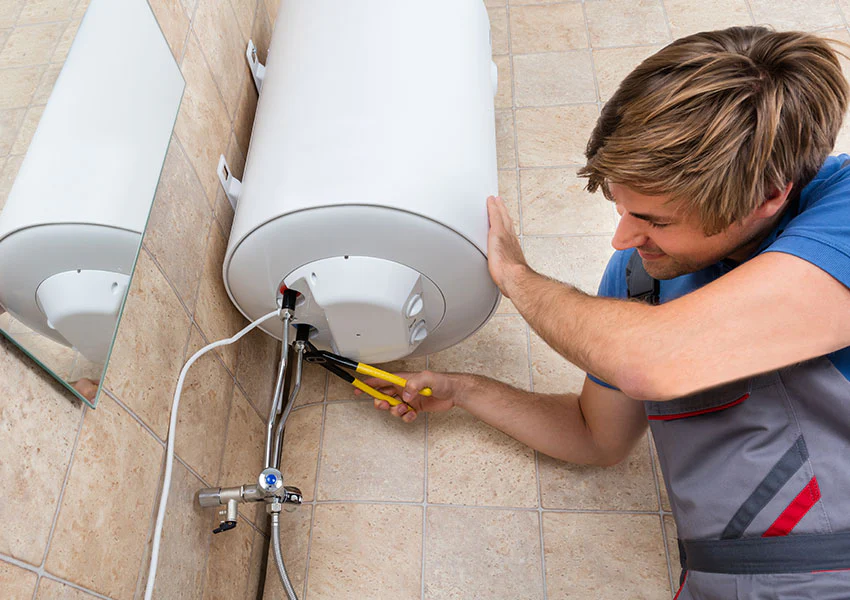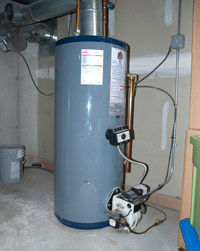We've stumbled upon the article pertaining to What Kind of Maintenance Do Water Heaters Need? down the page on the net and felt it made good sense to talk about it with you over here.

Hot water is crucial for daily convenience, whether it's for a revitalizing shower or washing recipes. To ensure your warm water system runs efficiently and lasts much longer, regular upkeep is key. This short article gives useful pointers and insights on just how to preserve your home's warm water system to avoid disturbances and expensive repair services.
Introduction
Preserving your home's warm water system might appear challenging, yet with a few basic actions, you can ensure it runs efficiently for many years ahead. This guide covers every little thing from recognizing your hot water system to do it yourself upkeep ideas and knowing when to contact specialist assistance.
Importance of Maintaining Your Warm Water System
Regular upkeep not only prolongs the lifespan of your hot water system yet likewise ensures it operates efficiently. Ignoring upkeep can lead to decreased efficiency, higher energy expenses, and also early failing of the system.
Signs Your Hot Water System Requirements Upkeep
Knowing when your hot water system needs interest can stop major problems. Keep an eye out for indicators such as inconsistent water temperature, unusual sounds from the heating unit, or rusty water.
Flushing the Hot Water Heater
Flushing your hot water heater eliminates debris build-up, boosting efficiency and prolonging its life.
Checking and Replacing Anode Rods
Anode poles protect against corrosion inside the tank. Inspecting and replacing them when worn out is important.
Complex Issues Requiring Professional Help
Examples include major leaks, electrical problems, or if your water heater is constantly underperforming.
Routine Professional Maintenance Benefits
Professional upkeep can consist of detailed examinations, tune-ups, and making certain conformity with safety and security criteria.
Checking and Changing Temperature Level Settings
Adjusting the temperature setups makes sure optimum efficiency and security.
DIY Tips for Maintenance
You can perform numerous maintenance tasks yourself to maintain your warm water system in leading condition.
Checking for Leakages
Consistently evaluate pipelines and connections for leaks, as these can bring about water damages and higher bills.
Recognizing Your Warm Water System
Before diving into upkeep jobs, it's valuable to understand the basic parts of your hot water system. Generally, this consists of the water heater itself, pipes, anode poles, and temperature controls.
Month-to-month Upkeep Tasks
Normal regular monthly checks can help capture minor issues prior to they intensify.
Testing Stress Relief Valves
Testing the stress relief valve ensures it operates properly and prevents excessive pressure build-up.
Insulating Pipelines
Protecting hot water pipelines decreases warmth loss and can save energy.
When to Call an Expert
While do it yourself maintenance is beneficial, some concerns require specialist expertise.
Final thought
Normal maintenance of your home's warm water system is essential for effectiveness, long life, and expense financial savings. By complying with these pointers and understanding when to look for professional aid, you can ensure a reputable supply of warm water without unforeseen disruptions.
Water Heater Maintenance: The Basics
Maintaining your water heater will ensure it operates efficiently and has a longer lifespan. Neglecting regular maintenance can lead to costly repairs and an even bigger chunk of your savings if you have to replace it sooner than necessary. But there’s good news: Most water heater maintenance tasks are relatively simple and easy for homeowners with basic DIY skills.
Flush the Water Heater
Over time, sediment and minerals can build up in the tank, reducing its efficiency and potentially causing damage. To flush the tank, turn off the power or gas supply, attach a hose to the drain valve near the bottom and open the valve to drain the water until it runs clear. Ideally, flush the tank annually.
Replace the Anode Rod
The anode rod is a sacrificial metal rod that helps prevent corrosion inside the tank. Inspect and replace it every three to five years or per the manufacturer's recommendation. To replace the anode rod, turn off the power or gas supply, drain a few gallons of water from the tank, unscrew the old rod and replace it with a new one. If the anode rod is significantly corroded or covered in calcium buildup, it's a sign the water heater may need to be replaced soon.
Tune-Up
A yearly tune-up can help identify potential issues and ensure your water heater operates at peak efficiency. This typically involves checking the thermostat, burner assembly (for gas heaters) and any other components specified by the manufacturer. During a tune-up, the technician may also clean the burner and adjust the pilot light (for gas heaters) or examine the heating elements (for electric heaters).
How to Maintain Your Water Heater
Insulate the tank. Insulating the tank can improve energy efficiency and reduce heat loss, saving you money on energy bills. You can purchase precut insulation blankets designed specifically for water heaters or use standard fiberglass insulation wrapped securely around the tank. Check the temperature. The recommended water temperature for most households is around 120 degrees Fahrenheit (49 degrees Celsius). Higher temperatures can increase energy costs and potentially cause scalding. Use a kitchen thermometer to check the temperature at the faucet nearest the water heater. Monitor water pressure. Excessive water pressure can strain the water heater and cause leaks or even tank failure. Install a pressure-reducing valve if necessary. The ideal water pressure range is between 60 and 70 PSI (pounds per square inch). Test the temperature and pressure (T&P) relief valve. The T&P relief valve is a safety feature that releases pressure if the tank gets too hot or the pressure builds up too high. Test it annually by lifting the lever and allowing a small amount of water to release. Replace the valve if it doesn't release water or reseal properly. Check for leaks. Regularly inspect the tank, pipes and fittings for leaks or corrosion. Deal with issues promptly to prevent further damage. Even a small leak can lead to significant water damage over time. Consider a tankless water heater. If your traditional tank-style water heater is nearing the end of its lifespan ( typically 10 years), consider replacing it with a tankless water heater. These units heat water on demand, reducing standby energy losses and potentially saving you money on your energy bills. Schedule professional maintenance. While homeowners can perform many water heater maintenance tasks, it's still a good idea to schedule professional maintenance every few years. A plumber or HVAC technician can thoroughly inspect the unit, identify potential issues and ensure it operates safely and efficiently. https://www.homeserve.com/en-us/blog/home-improvement/hot-water-heater-maintanence/

Hopefully you enjoyed reading our piece about How to Maintain Your Water Heater & Prolong its Life. Many thanks for spending some time to read through our piece of content. Enjoyed our blog entry? Please quickly share it. Help somebody else discover it. Bless you for your time. Kindly come visit our site back soon.
Try Here
 Anthony Michael Hall Then & Now!
Anthony Michael Hall Then & Now! Charlie Korsmo Then & Now!
Charlie Korsmo Then & Now! Traci Lords Then & Now!
Traci Lords Then & Now! Justine Bateman Then & Now!
Justine Bateman Then & Now! Megyn Kelly Then & Now!
Megyn Kelly Then & Now!